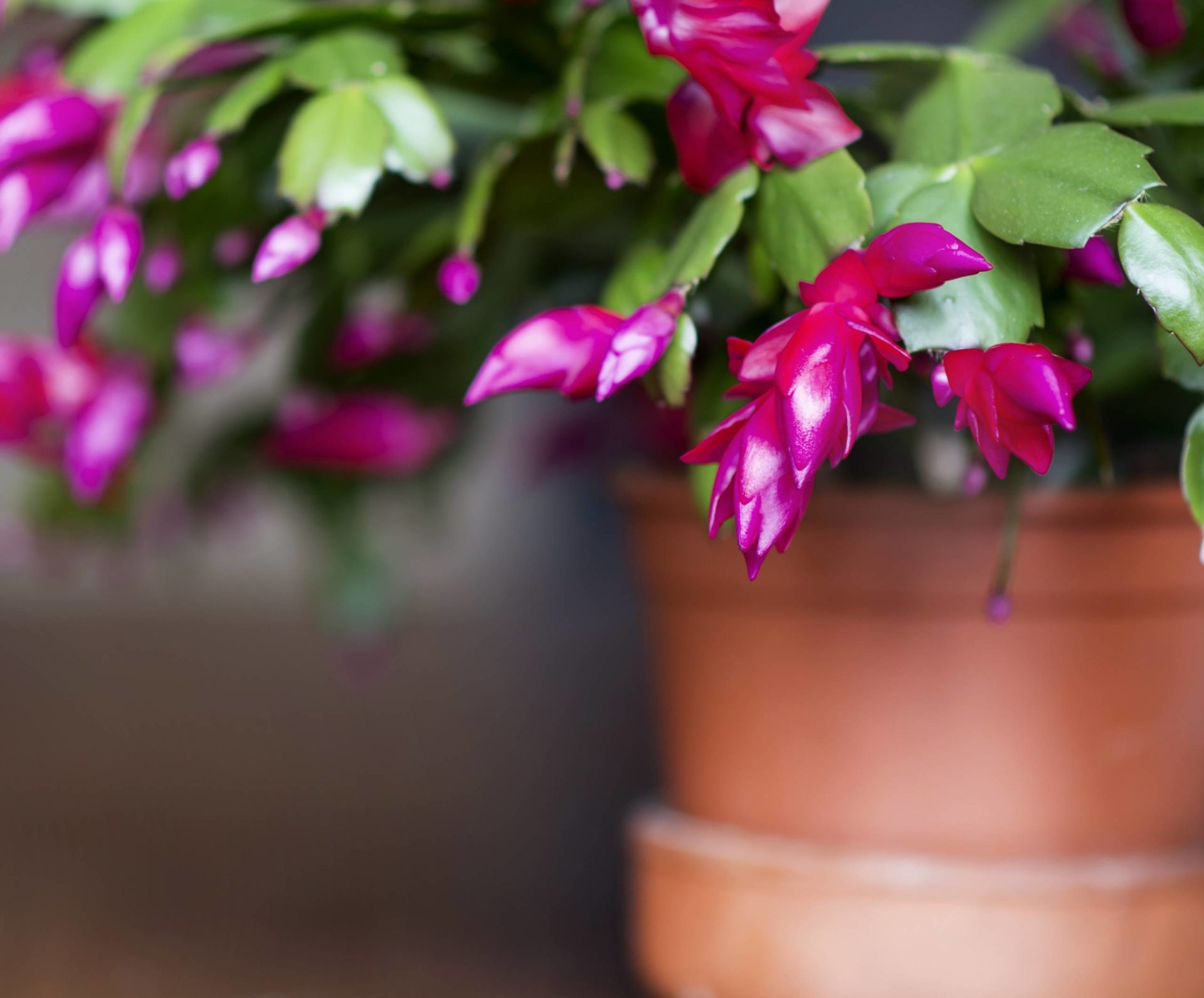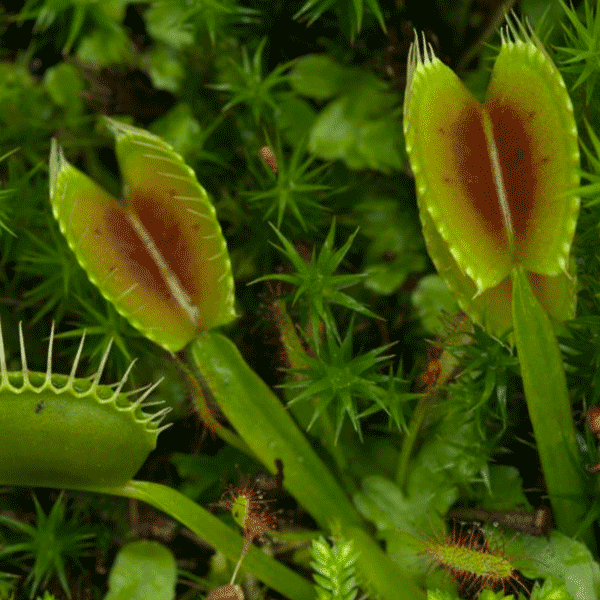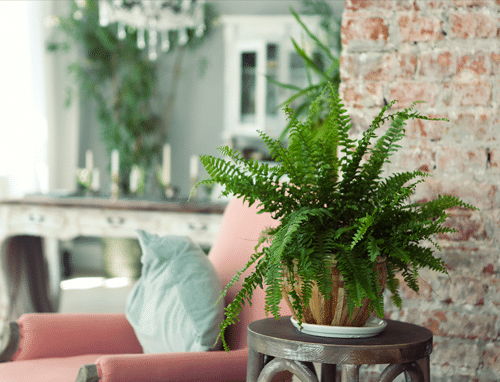Houseplants have enjoyed a resurgence in popularity over the past few years, and for good reason. There are many varieties of exotic plants that thrive in our temperature-controlled homes. We love having our own leafy green oasis inside every day of the year, and any collector’s eye can’t help but adore our selection of plants from desert-dwelling succulents to lush, tropical bromeliads – all under one roof.
Whether you’re a houseplant pro, with an impressive collection, or you’re looking to try your first, we have a couple key guidelines to help you keep your plants healthy, happy, and looking their best.
Houseplant Care Basics
The essential rule is to replicate the habitat the plant is naturally adapted to, and you’ll have healthy plants without any hassle. Your houseplants may hail from all different corners of the globe, with drastically different climates. What works for one, might not fit another plant’s needs. Picturing the climate your plant is from will give you the best idea of their needs and how to meet them.
Water and Drainage
All your houseplants are going to have watering needs. The amount of water they need and the soil they are planted in go hand in hand! Some plants prefer soils that retain some water, while others will want quick-draining soils to prevent waterlogged roots. Whenever you do water your houseplants, do so thoroughly until the water flows out of the drainage holes at the bottom. This will help to wash away any accumulated salts that your plant’s roots are sensitive to. For best results, your houseplant may prefer distilled water, which is free from chlorine and fluoride found in most tap water.
While all plants need some light, their sensitivity to light can vary quite a bit between species. Plants from arid areas, with lots of exposure, will need as much sunlight as you can get them. Other tropical species, accustomed to steamy jungles, may need less direct sunlight. Keep in mind, even your houseplants can get sunburns. Placing your plant directly next to glass windows magnifies the UV rays of the sun and can leave them burnt.
Fertilizer
Many of your houseplants will grow happily without any fertilizer. If you do fertilize, most plants will prefer a half-dose to avoid burning their sensitive roots.
Transplanting
Your healthy plant will eventually outgrow its home and need an upgrade to a larger container. This is the perfect opportunity to ensure you are providing your plant with the right soil to suit their needs. It might be tempting to move up multiple container sizes at once. Try to resist this temptation, as too much unused space in your container could retain water and lead to root rot. By stepping your houseplants up one size at a time, you’ll make sure they have the space to grow without risking overwhelming your container with unused soil.
From Beginner to Expert
Following the above tips will help anyone succeed with their houseplants. If you’re looking to take a plant home with you, we have some favorites to recommend:
The essential rule is to replicate the habitat the plant is naturally adapted to, and you’ll have healthy plants without any hassle. Your houseplants may hail from all different corners of the globe, with drastically different climates. What works for one, might not fit another plant’s needs. Picturing the climate your plant is from will give you the best idea of their needs and how to meet them.
Following the above tips will help anyone succeed with their houseplants. If you’re looking to take a plant home with you, we have some favorites to recommend:
Beginner Houseplants
This might be your first houseplant, or maybe you enjoy keeping things simple. These are some of our favorite fool-proof plants that make houseplanting easy:

Boston Fern
These elegant plants rose in popularity in the Victorian era and have been a classic ever since. The delicate, branching leaves of the Boston fern make it ideal for display where they can hang freely. This is arguably the easiest fern to grow, requiring regular watering and moderate light, it excels with high humidity.
ZZ Plant
This is one tough plant that needs infrequent watering and very little light. It is the perfect option for that corner of your home you never thought something green could survive in. It has beautiful, robust, green leaves and thrives on a little neglect.
Sansevieria
Also known as the snake plant, or mother-in-law’s-tongue, the many names for this succulent reveals how popular it is. They’ll thrive inside or on your balcony in the summer, and have a modern and bold look. There are many different varieties, so this long-lived plant is a smart investment for your home decor.
Spider Plant
The Spider Plant has a cool aesthetic that looks otherworldly. This plant needs infrequent watering and will still thrive even if you forget about it every once in a while! It sprouts little “pups” so you could have a miniature jungle of spider plants at home in no time.
Intermediate Houseplants
You’re looking for a houseplant that requires a little effort, but pays you back for your effort! These houseplants need a bit more careful attention to thrive, but are excellent choices for any home:

Christmas Cactus
These cacti have a reputation for their spectacular winter blooms. This plant is actually exceptionally easy to keep alive and grow, and can be very forgiving with watering and light levels. They prefer to stay out of direct sun, and while they may want regular watering, they have emergency stores in case of drought. The trick to this plant is enticing it to bloom reliably each year, which can be a delicate balance of just the right light and moisture levels.
Philodendron
These are a classic houseplant, with the variety of choices available making them a popular choice for decades. While they can be picky about their growing conditions, they will let you know what they want. If you pay attention to your Philodendron’s behavior, you’ll learn its needs quickly.
Peace Lily
These beautiful plants are an elegant statement piece in your home. Their large, tropical leaves are accented by iconic white flowers. The Peace Lily is the Goldilocks of house plants, they’ll want just the right amount of light and water. These beautiful plants thrive with lots of indirect light, so be mindful of where you place them in your house. While they do need frequent watering in the summer (less so in the winter), they are quite forgiving if you forget once in a while.
Expert Houseplants
These houseplants all bring something spectacular to your home, but have care requirements that make them difficult or time-consuming. They may be a challenge, but many of them return your efforts with their unique charm:

Croton
These plants have striking leaves, reminiscent of an abstract painter’s canvas. Their beautiful display takes some time and patience to create. They are very picky about their needs and require near constant levels of moisture and light that can take daily monitoring. Keep in mind, they can be toxic to humans and pets, but their gorgeous and unique look can be worth all the time and effort.
Anthurium
This is one of the newest trendy houseplants, and its unique look will quickly show you why. They might not be the cheapest plant, but they pay off in their wildly exotic and nearly continuous blooms. These plants hail from tropical jungles and require consistent moisture at their roots and high humidity to look their best.
Venus Fly Trap
This is a favorite for kids (or your inner child). These carnivorous plants are enticing for the same reasons that make them difficult to care for. Not only will you need to balance this plant’s delicate water requirements, but feeding them can also present unique challenges. Despite their more intensive care needs, these plants are fascinating and a joy to have at home.
There’s a good reason so many of us end up owning houseplants! Having a plant or two is not only statement-making decor, but having something green at home is a great pick-me-up all year.






